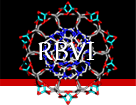

 about
projects
people
publications
resources
resources
visit us
visit us
search
search
about
projects
people
publications
resources
resources
visit us
visit us
search
search
Quick Links
Featured Citations
BMAL1-HIF2A heterodimer modulates circadian variations of myocardial injury. Ruan W, Li T et al. Nature. 2025 May 22;641(8064):1017-1028.
Glutamate gating of AMPA-subtype iGluRs at physiological temperatures. Kumar Mondal A, Carrillo E et al. Nature. 2025 May 15;641(8063):788–796.
Molecular basis of influenza ribonucleoprotein complex assembly and processive RNA synthesis. Peng R, Xu X et al. Science. 2025 May 15;388(6748):eadq7597.
Structure of the human TWIK-2 potassium channel and its inhibition by pimozide. Khanra NK, Wang C et al. Proc Natl Acad Sci USA. 2025 May 13;122(19):e2425709122.
High-resolution characterization of ex vivo AAT polymers by solution-state NMR spectroscopy. Lowen SM, Waudby CA et al. Sci Adv. 2025 May 9;11(19):eadu7064.
More citations...News
May 7, 2025
The ChimeraX 1.10 release candidate is available – please try it and report any issues. See the change log for what's new.
March 19, 2025

|
March 1, 2025
 Follow UCSF ChimeraX on BlueSky!
@chimerax.ucsf.edu
Follow UCSF ChimeraX on BlueSky!
@chimerax.ucsf.edu
Upcoming Events
May 27, 2025
Biophysical Society 1-hr online tutorial: Biophysics101: Visualizing proteins with ChimeraX at 3pm Eastern (requires registration)
June 24, 2025
PDB101 1-hr online tutorial: Introduction to molecular animation at 1pm Eastern, 10am Pacific: (requires registration)
UCSF ChimeraX (or simply ChimeraX) is the next-generation molecular visualization program from the Resource for Biocomputing, Visualization, and Informatics (RBVI), following UCSF Chimera. ChimeraX can be downloaded free of charge for academic, government, nonprofit, and personal use. Commercial users, please see ChimeraX commercial licensing.
ChimeraX is developed with support from National Institutes of Health R01-GM129325.
 ChimeraX on Bluesky:
@chimerax.ucsf.edu
ChimeraX on Bluesky:
@chimerax.ucsf.edu
Feature Highlight

Several lighting modes are available, including ambient occlusion.
The image shows hemoglobin (PDB
4hhb)
with the four chains shown as surfaces of different colors and
heme residues as spheres. The command
lighting soft
or the Graphics
icon
![]() can be used to turn on ambient shadowing from 64 directions. The command
lighting gentle
gives a similar result, except tuned to emphasize larger indentations.
can be used to turn on ambient shadowing from 64 directions. The command
lighting gentle
gives a similar result, except tuned to emphasize larger indentations.
Example Image

The photosynthetic reaction center from a
purple sulfur bacterium is shown as a cartoon with “tube” helices
and membrane boundaries from the OPM database (Orientations of Proteins in Membranes,
entry 1eys).
Blue and red balls represent the cytoplasmic and periplasmic sides
of the bacterial inner membrane, respectively.
The title and other text labels were added with the
2dlabels
command and repositioned interactively with the move label
mouse mode
![]() .
ChimeraX session file: prc.cxs
.
ChimeraX session file: prc.cxs
About RBVI | Projects | People | Publications | Resources | Visit Us
Copyright 2018 Regents of the University of California. All rights reserved.